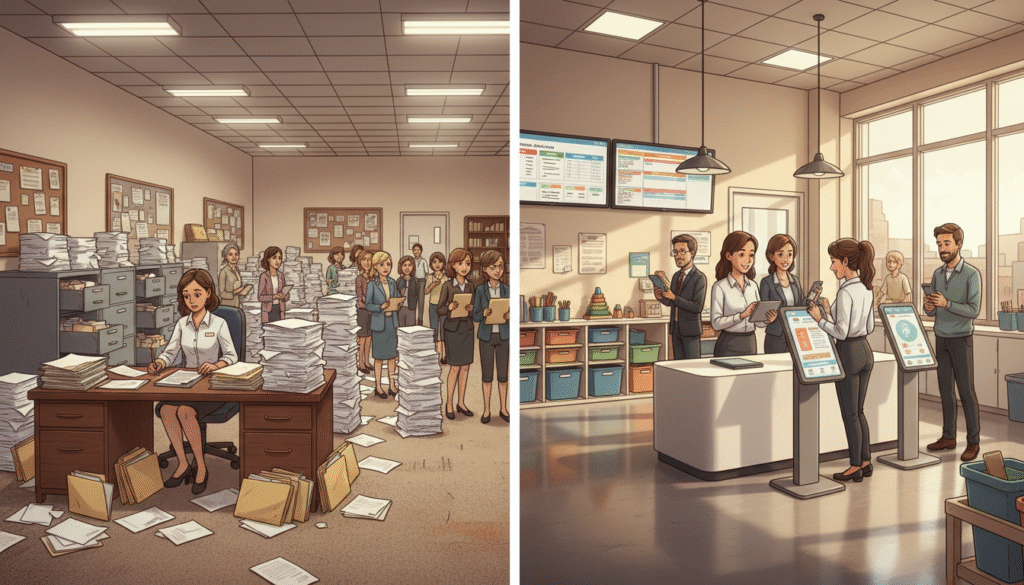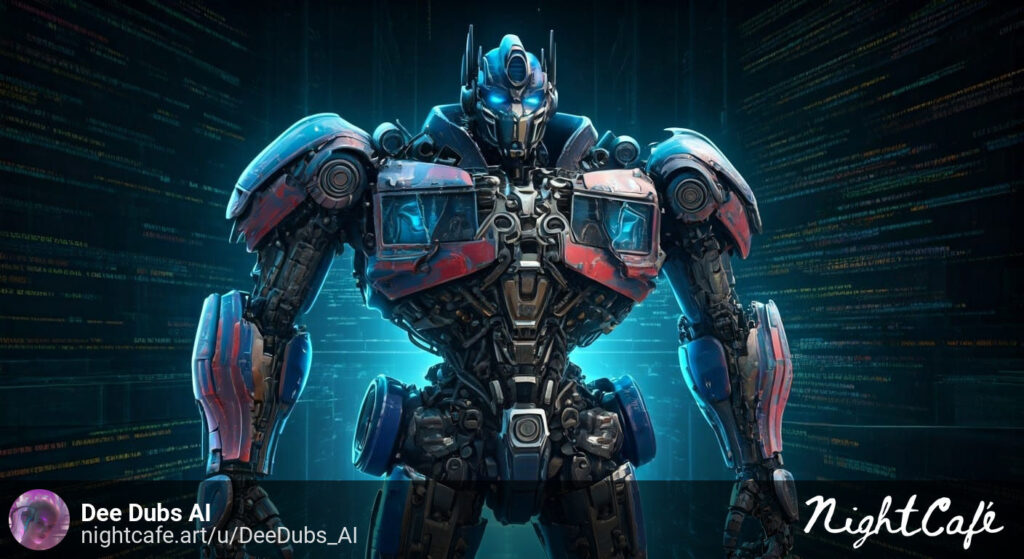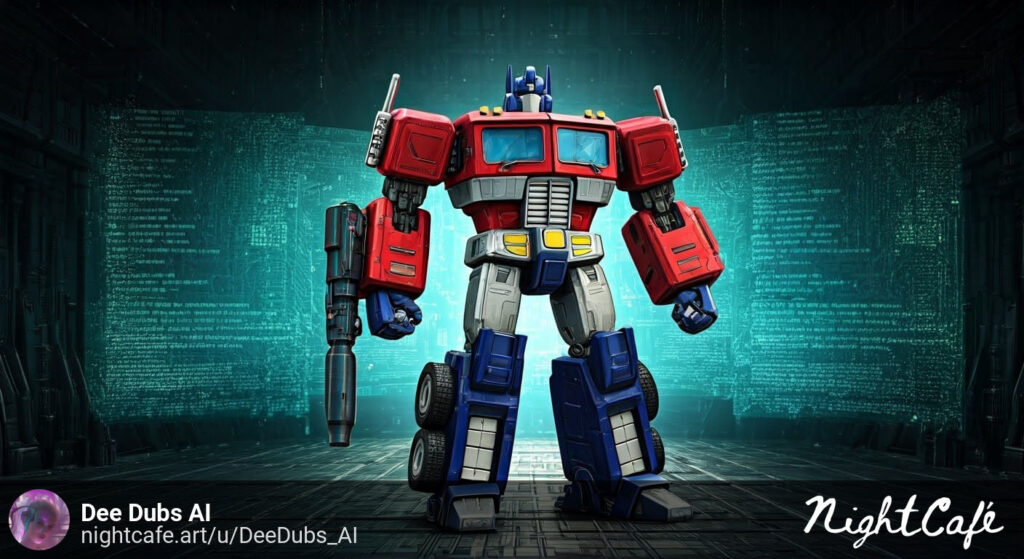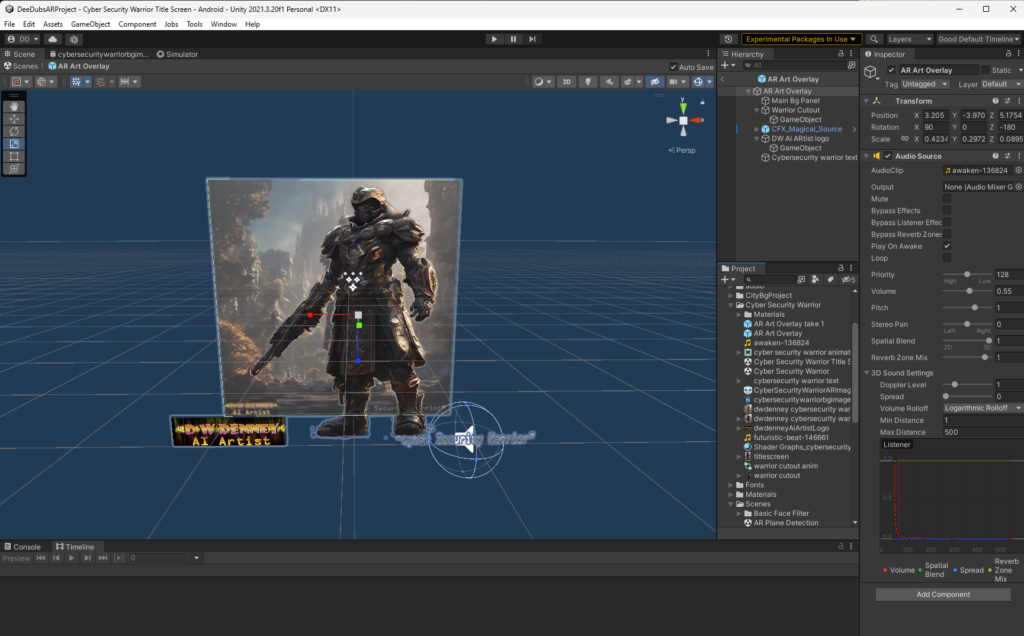
The Problem is Real, and So is the Solution
Across America, daycare centers are drowning in paperwork, losing critical records, and facing regulatory compliance nightmares. Parents struggle with outdated sign-in processes, administrators waste countless hours on manual data entry, and government oversight becomes nearly impossible with fragmented, paper-based systems. But what if I told you this problem has already been solved?
From Real-World Problem to Digital Innovation
During my bachelor’s degree studies here in Washington, I witnessed firsthand the chaos plaguing our local daycare system. The facility where my children attended used a simple clipboard with scrap paper for sign-ins. Records were constantly lost, parents were frustrated, and the owner faced regulatory scrutiny due to incomplete documentation. This wasn’t just an inconvenience—it was a systemic failure affecting child safety and business viability.
Rather than accept this broken system, I took action. As part of my thesis project, I developed and implemented a comprehensive Daycare Management System that transformed operations overnight. The results were immediate and dramatic.

The Complete Daycare Management Solution
My system addresses every pain point in daycare operations through an integrated digital platform:
- **Streamlined Parent Registration**: Parents can easily sign up online, complete all required forms digitally, and register multiple children through an intuitive interface.
- **Secure Child Check-In/Check-Out**: Simple, fast digital logging system that captures accurate timestamps and maintains complete attendance records.
- **Administrative Portal**: Comprehensive dashboard for daycare owners and staff to manage enrollments, view real-time attendance, generate reports, and maintain compliance documentation.
- **Automated Record Keeping**: All interactions are automatically logged and securely stored, creating an unbreakable audit trail for regulatory compliance.
- **Real-Time Reporting**: Instant access to attendance patterns, enrollment statistics, and compliance reports that satisfy government requirements.
- **Mobile-Responsive Design**: Works seamlessly on tablets, smartphones, and computers, ensuring accessibility for all users.
- **Data Security**: Enterprise-level security protocols protect sensitive family information while ensuring authorized access for legitimate oversight.
Proven Results and Scalable Impact
The implementation of my system eliminated lost records entirely, reduced administrative overhead by over 70%, and provided the daycare owner with bulletproof compliance documentation. Parents loved the convenience, staff appreciated the efficiency, and regulatory concerns disappeared overnight.
More importantly, this solution is infinitely scalable. Whether deployed at a single facility or across an entire state’s daycare network, the system can handle thousands of users while maintaining the same level of reliability and security.

Why Government Should Act Now
For government agencies overseeing childcare services, this system offers unprecedented advantages:
- **Enhanced Oversight**: Real-time access to attendance data and compliance metrics across all participating facilities
- **Reduced Administrative Burden**: Automated reporting eliminates manual data collection and verification processes
- **Improved Child Safety**: Complete digital trails ensure no child is ever unaccounted for
- **Cost Efficiency**: Dramatic reduction in oversight costs while improving service quality
- **Standardization**: Uniform data collection and reporting across all daycare facilities
- **Future-Ready Infrastructure**: Scalable platform that grows with expanding childcare needs
Ready to Transform Daycare Operations Nationwide
The technology exists. The solution has been proven. The only missing piece is implementation at scale. Having successfully solved this problem once, I’m prepared to recreate and deploy this system rapidly for government adoption.
This isn’t theoretical—it’s a battle-tested solution that transformed real operations and solved real problems. The daycare crisis doesn’t need years of research and development. It needs immediate action with proven technology.
Let’s Discuss Implementation
I invite government representatives, policymakers, and childcare administrators to contact me directly to discuss how this system can be rapidly deployed to solve the daycare crisis. Together, we can transform childcare operations nationwide, ensuring better outcomes for children, parents, and providers alike.
The solution is ready. The expertise is proven. The time for action is now.
==================================================
About the Author: A proven innovator with hands-on experience solving complex operational challenges through technology. Bachelor’s degree graduate with demonstrated success in developing and implementing digital solutions for critical infrastructure needs.















